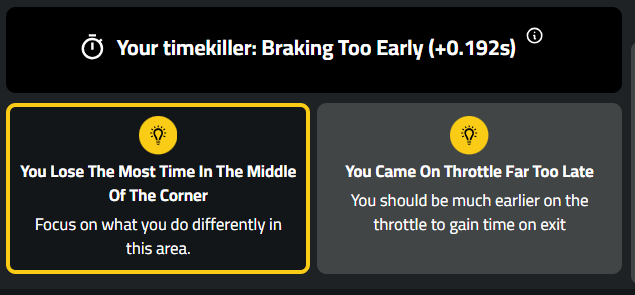Mercedes AMG GT3 EVO Indianapolis Hot Lap Analysis
Let’s take a look at this hot lap of Indianapolis in the Mercedes AMG GT3 EVO driven by HYMO.
The Track
Indianapolis Motor Speedway, affectionately known as the Brickyard, is one of the most iconic and historic venues in the world of motorsport. Located in Speedway, Indiana, USA, it was built in 1909, making it over a century old and rich in racing heritage. The Speedway is famed for hosting the Indianapolis 500, one of the most prestigious events in the world of motorsport.
The track's original surface was made of over 3 million bricks, leading to its famous nickname. Now, the 4.0 kilometre (2.5 mile) oval circuit is primarily asphalt, with a one-yard strip of bricks at the start/finish line as a nod to its history. The Speedway also includes a road course, used for various other racing events, which is 4.192 kilometres (2.605 miles) long and incorporates part of the oval.
The Indianapolis Motor Speedway is not just a race track; it's a symbol of automotive development and racing history. Its size and layout, with long straightaways and four distinct corners, make it unique in the racing world. While it's most known for open-wheel racing, the track has also hosted events in other series, including NASCAR and, on occasion, GT3 races.
To help you out, the HYMO setup used in this hot lap video is available for you to try HERE.
Analysis
The analysis below uses the Track Titan platform to compare a HYMO reference hotlap in blue to one of the Track Titan community drivers through Segment 3. The key fault at play in this example is the choice of gear and the timing of such. The community driver times their braking point very well, however they choose to shift down to 2nd at the same time as turning in from the outside kerb. This combination of instabilities all at the same time gives the community driver the slightest of oversteer moments which pushes them slightly wide and destroys their minimum speed. The reference driver decides to keep it in 3rd. The net result is over a 0.1s increase in laptime for the community driver.
.png)
You can analyse every other turn in the Track Titan platform; see reference lap here.
You can also take it to the next level and compare it against your own driving, just sign up to Track Titan for FREE today here.
Sim Racing Top Tips
GT3 racing car aerodynamics are crucial for performance, focusing on balancing downforce and drag. Downforce, generated mainly by the front splitter, rear wing, and underbody diffuser, increases tyre grip for better cornering speeds but can increase aerodynamic drag, affecting straight-line speed. Teams adjust these aerodynamic elements based on track specifics and racing conditions to optimise performance. Efficient airflow management also plays a key role, ensuring proper cooling of critical components like brakes and engines. GT3 aerodynamics are regulated under strict specifications and the Balance of Performance system to ensure fairness among various car models. This complex interplay of aerodynamics in GT3 racing involves a combination of computational simulations, wind tunnel testing, and on-track assessments to fine-tune the cars within regulatory constraints for optimal performance.
Don't know where to improve? Use the HYMO hotlap to find out.
To see full lap analysis of your own driving, you can sign up to Track Titan for FREE today here.


.png)























